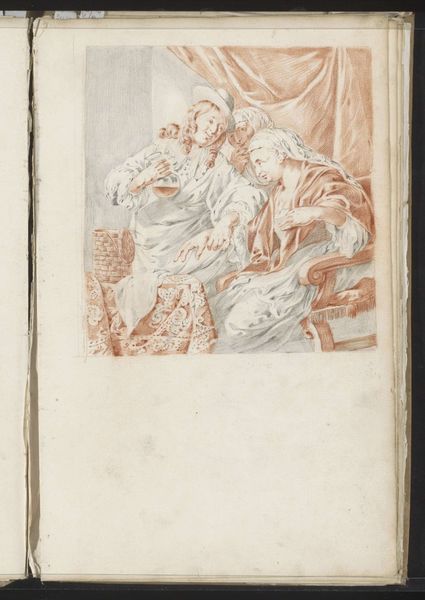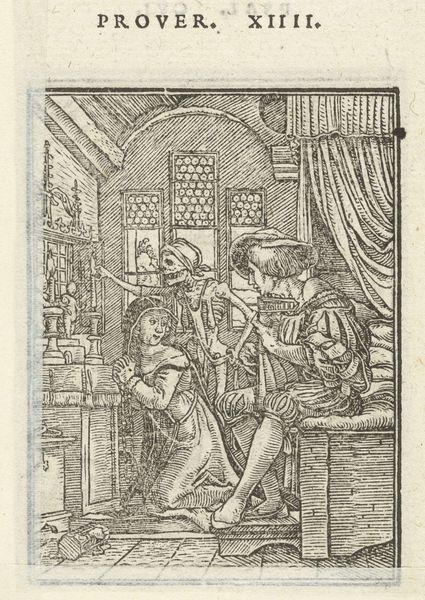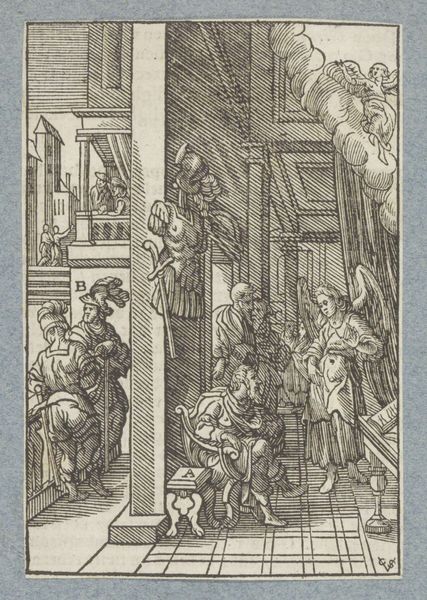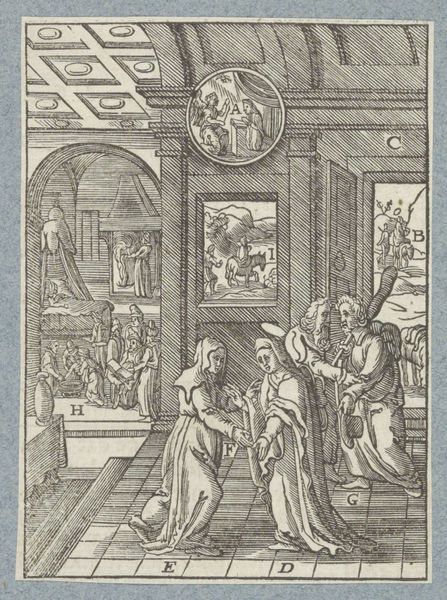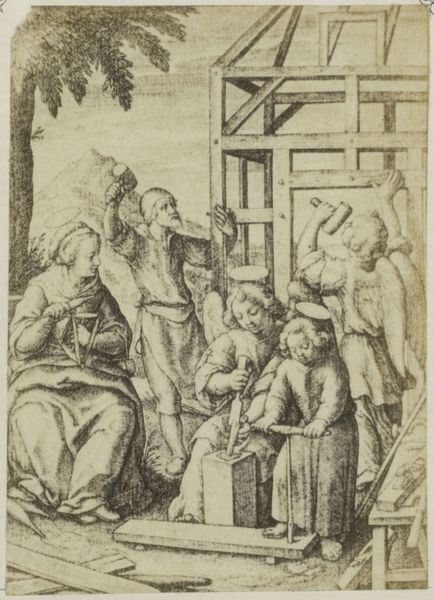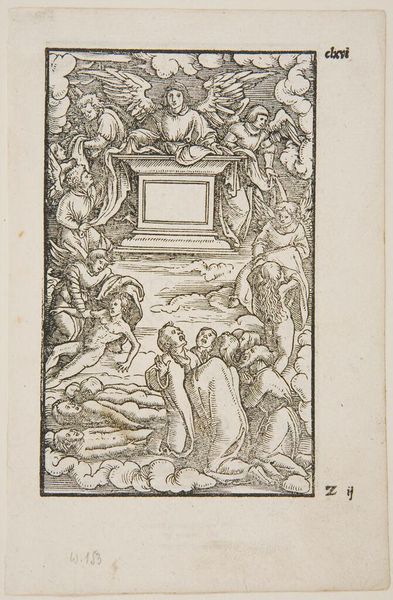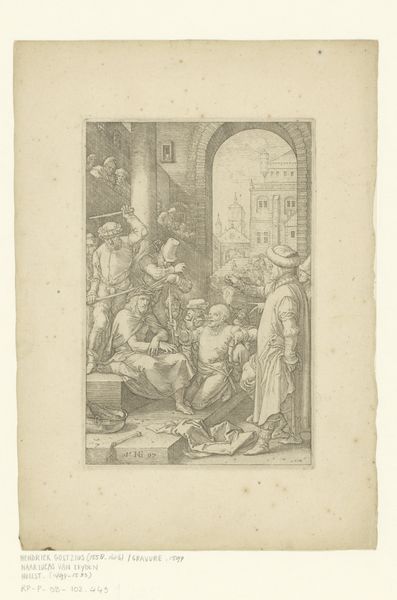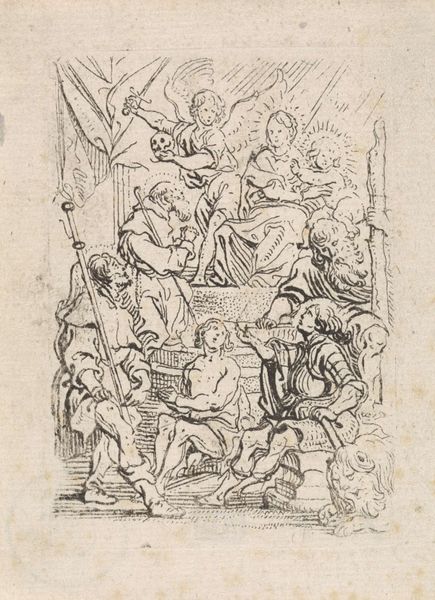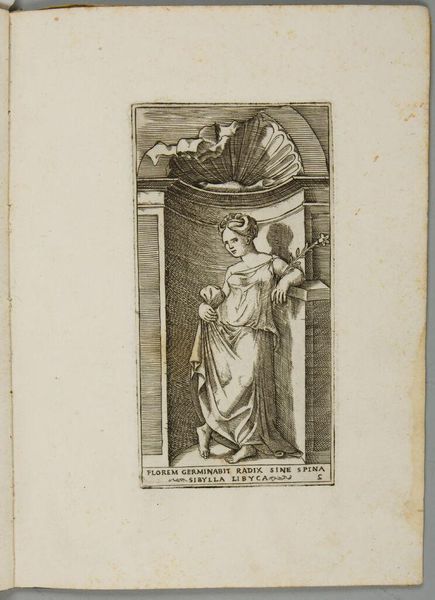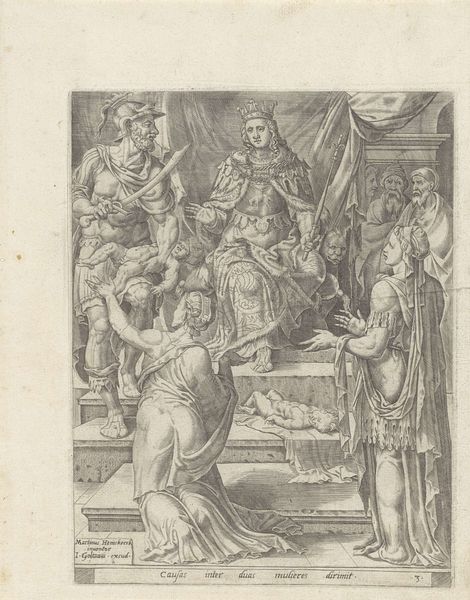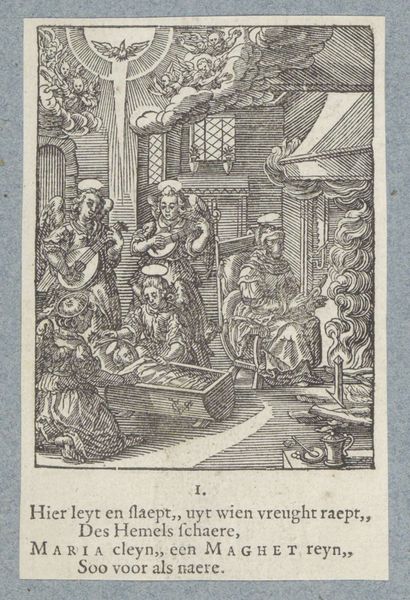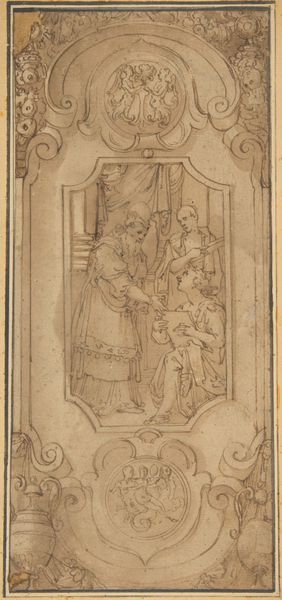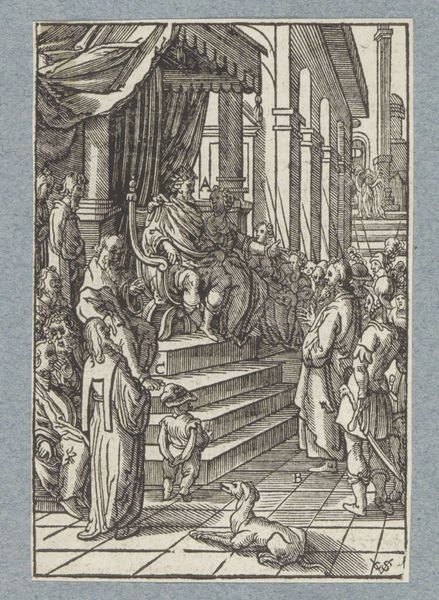
drawing, paper, ink
#
drawing
#
narrative-art
#
baroque
#
figuration
#
paper
#
ink
#
coloured pencil
#
history-painting
Copyright: Rijks Museum: Open Domain
Editor: This drawing, "Christus voor een rechter," or "Christ Before a Judge," created in 1696 by Hendrick van Beaumont, is rendered in ink on paper. The sepia tones give it a solemn, almost melancholic air. What strikes you most about it? Curator: The subject matter alone implicates power structures and systems of injustice. This rendering resonates with ongoing societal issues of legal inequality. Do you see how Beaumont positions Christ—his vulnerability is not just spiritual, but deeply social. The gaze of those figures beside him, who do they represent, and what are they complicit in? Editor: They seem like onlookers, maybe guards? Their averted gazes could signify apathy, a sort of willful blindness. Curator: Precisely. And consider the judge. Seated on high, accompanied by what looks like a canine – often a symbol of loyalty or, in this context perhaps, aggressive enforcement of power. How does Beaumont use Baroque style, with its drama and emotional intensity, to heighten our understanding of this scene's painful complexities? Editor: It feels less about glorifying a historical moment and more about questioning the abuse of power. The focus is less on divine glory, and more on the human cost of injustice. Curator: Yes! Art like this compels us to constantly re-evaluate historical narratives and understand how these themes echo through different eras and continue to challenge us today. Editor: This has definitely given me a fresh perspective on the work and how it invites reflection. Curator: Me too; it highlights the enduring power of art to challenge injustice.
Comments
No comments
Be the first to comment and join the conversation on the ultimate creative platform.
